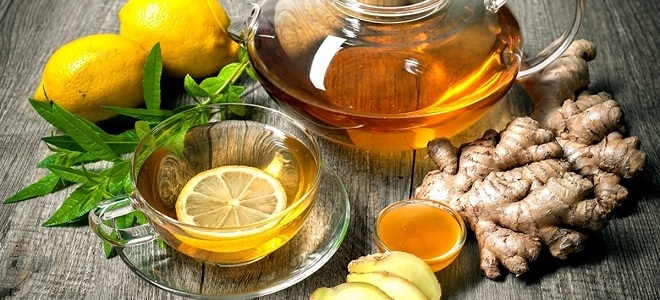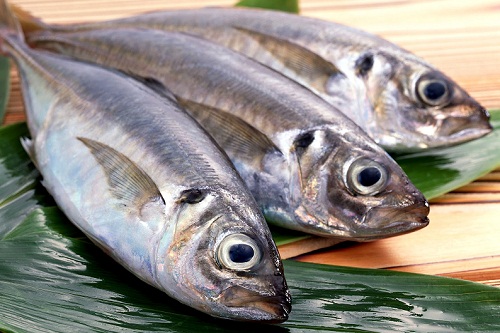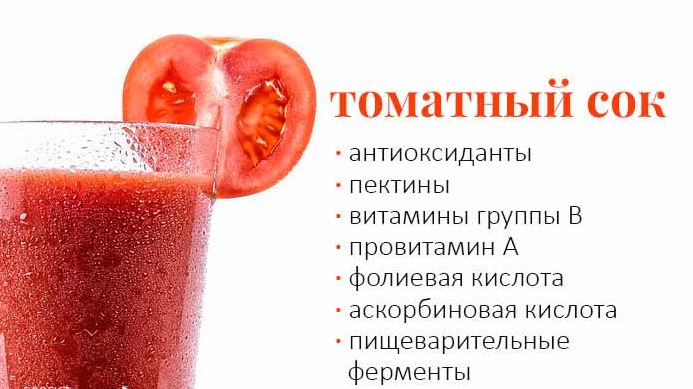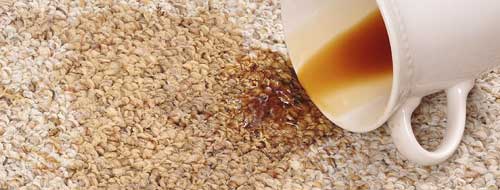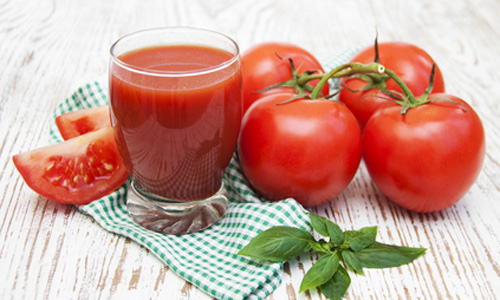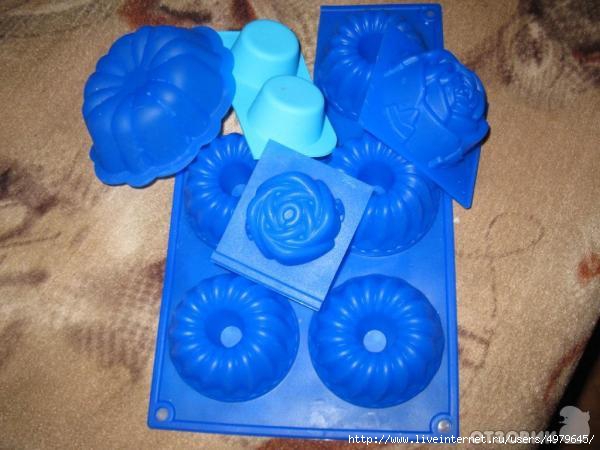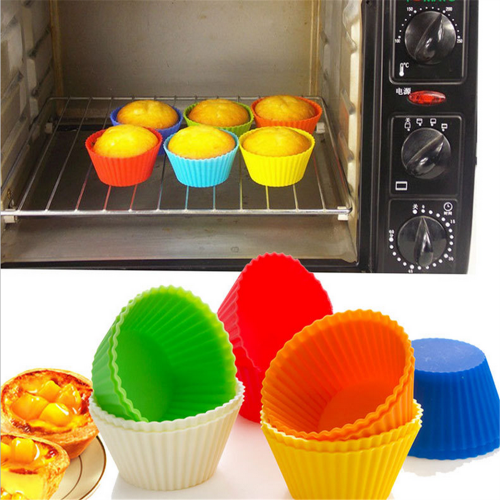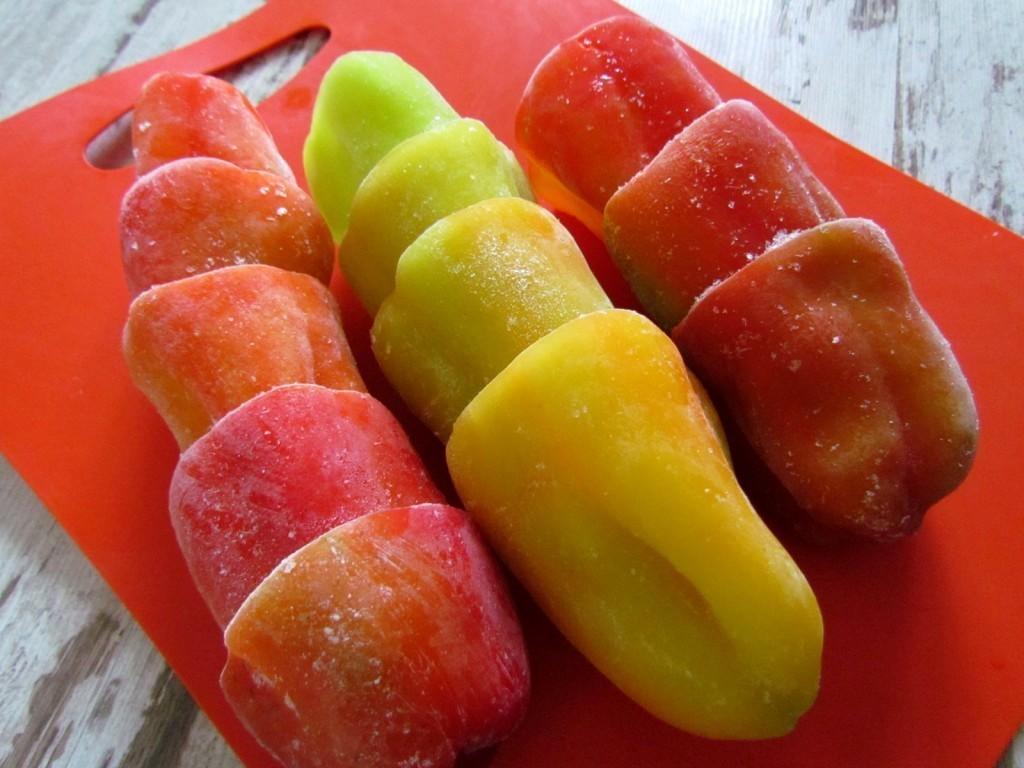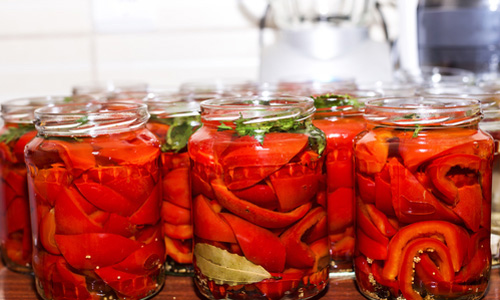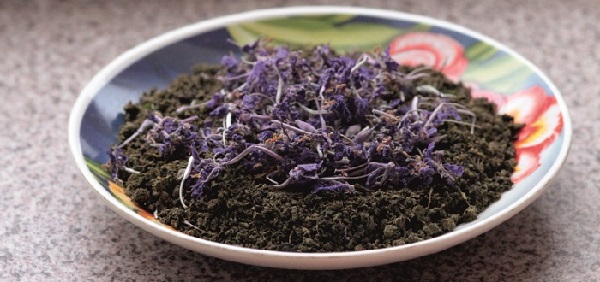Red tea - useful properties and varieties of red tea. Red or black tea
Chinese red tea is a highly fermented tea (oxidation reaches 70-90%), which is commonly called black outside of China. The confusion arises due to the fact that the Europeans, whom he came to in the XVII century, without going into details of tea making, conditionally divided all the many varieties of it by the color of the infusion - into green and black. And in the homeland of tea, where its history goes back centuries so far that it takes thousands of years, there are, of course, more nuances. Red tea appeared by Chinese standards not very long ago - in the Ming Dynasty - after the separation of China from the Mongol Empire of Yuan in the XIV century. In the wake of the big changes that have affected tea making.
The process of making red tea differs from the more ancient tradition of making green tea by the absence of the “killing green”, 杀青, “sha ching” stages. Under this frightening name lies just a quick, high-temperature roasting of slightly dried tea leaves. And in the manufacture of red tea, the dried leaf is first twisted and kneaded, and then slowly heated.
In a healthy tea leaf, vital processes are supported by a variety of enzymes known as antioxidants, polyphenols, or tea catechins. When the integrity of leaf cells from creasing and twisting is violated, life in it begins to fade, and catechins rapidly absorb oxygen from the air, transforming into more complex, but no less useful compounds - tannins, theaflavins, thearubigins and others, whose task is to suppress the growth of many pathogenic microorganisms . They give the tea infusion its characteristic red-brown color. When the temperature rises to 40-50 ° C, the activity of enzymes increases, then decreases and stops above 60 ° C.
But in medieval China, where they began to make red tea, in such terms, of course, no one thought. Peasants who experimented with tea technology (after canceling the production of the famous pressed "Dragon and Phoenix Pancakes") simply saw a color change from green to red, and they called it that. Red.
Red tea appeared in Fujian, in the 16th century (or even earlier) in the Tongmu Shan 桐木 горах mountains, which are located next to the Wui Shan massif, where oolongs began to be made at about the same time. However, production soon spread to neighboring regions. There were Qihong in Anhui, Ihong in Hubei and Ninghong in Jiangxi, Hunan from Hunan, Inhun from Guangdong, Yuehong from Zhejiang, Sukhun and Yixing from Jiangsu, Dianhong to Yunnan and others.
(pictured: Fujian, Wuyi Mountains, the homeland of red teas "Zheng Shan, Xiao Zhong")
Nowadays, Chinese red teas fall into three broad categories:
- "Xiao Zhongyi" produced on Mount Tongmu Shan using authentic technology, smoked over the branches of an old pine;
- "Gunfuhuns" (literally, "teas of superior craftsmanship"), produced from buds or leaves at an early stage of development, hand-picked and processed in strict accordance with traditional technology;
- "Hongsuicha", or "chopped tea" (CTC - from the English. Crush, Tead and Curl, and LTP - from the English. Lawrie Tea Processor, etc.), varieties produced from a fully opened leaf or summer buds, using large and small mechanization; the withered sheet is not curled, but cut.

(pictured: red tea "Zheng Shan Xiao Zhong")
Xiaochzhuns are produced in the Tongmu Guan Nature Reserve. The name stuck to tea for so long that even local old-timers understand Xiao Zhong differently. Some interpret Xiao as Small, because tea bushes growing wild in the Tunmu region are relatively small in size - both the bush itself and its leaves. Others advocate that Xiao in this case it makes sense Rare, because very few farms use re-smoking on pine coals.
Initially, the tea was called Lao Song Xiao Zhong (Old Pine - A Rare View). The British christened it Lapsan Souchong, under this name it is sold in Western countries today. In China today, the variety is called Zheng Shan, Xiao Zhong (Rare View from the Right Mountains). The correct refinement appeared after the incredibly popular tea began to be made far beyond the borders of its historical homeland. In addition, the name of tea that has gone through smoky withering and prolonged heating on charcoal usually mentions this: or xun wei, that is smoked or smoky flavor.
Currently, there are several techniques used to create Xiao Zhong. As a raw material take young fully formed tea leaves (not buds!) - May or June. The traditional method involves double heating on the coals of an old pine.

(pictured: peasant house in the Tunmu nature reserve, where tea is made using traditional technology)
Gunfuhuns are varieties whose production requires increased attention, experience and hard work. "Gongfu" translated from Chinese means "skill." Gunfuhuns happen large-leaved and small-leaved (although it would be right to say “small kidney”, since the main difference between gungfuhun and other teas is that they are made from kidneys). Ready-made kungfuhun looks like a mixture of dark brown and golden-orange curved flagella: as a result of processing, the kidneys turn golden, and the leaves turn dark brown or almost black. Large-leaved leaves are distinguished by a relatively large size and a bright, red tint of dry tea, so they are often called red-leaved. This category includes Yunnan dianhun and some types minkhunov.

(photo: large leaf Dianhong Mao Feng)
Small-leaved ones look like tiny dark brown, almost black flagella of twisted leaves and dark red buds, therefore their other name black-leafed. These are Yixing Huncha, Beilin and others.

(pictured: small-leaved Yixing Huncha)
The name, as a rule, is formed from the toponym of the area and the addition of "Hunch", "red tea" or simply "red". So, for example, the famous Yunnan (translated as "Red Tea from Dian" by the name of the ancient Thai kingdom, located from the 4th century BC to the 3rd century AD in the territory of the modern Yunnan province). And “Minhong” is the collective name for red teas in Fujian province, given in honor of the Ming kingdom, which was located on the territory of modern Fujian province in the X century. They make minhuns in the north of Fujian.
Among the famous gongfuhuns are “Qimen Hong Cha”, “Red Tea from Qimen County” in Anhui Province (abbreviated as “Qihong”, known in the West under the name “Kimong”), “Yixing Hongcha” and “Zhu Hai Jin Ya” from Jiangsu Province, the pearl of the tea industry in Zhejiang Province is Tszyu Qiu Hong Mei, Meng Ding Hong Cha from Sichuan, Anhui Fujian and, Anji Chi Cha from Zhejiang, and a new bright star, and the magnificent " "From Guangdong, and others. Due to the difference in raw materials and nuances of technology, each of them has its own unique taste and its own circle of consumers. But regardless of the variety, the technological process of their production consists of four stages: Wei Diao (萎凋) - drying, Zhou Nian (揉捻) - creasing, twisting, Fa Jiao (发酵) - fermentation, and Gan Zao (干燥) - drying. The general rule is the following: the slower the process of heating and the more moderate its temperature during fermentation and drying, the better the tea will be.

(in the photo: heating tea over coal - there are holes in the floor under the baskets where charcoals smolder under a layer of ash)
The aroma of dry tea is warm, spicy, with honey, fruit, bread and chocolate notes. The color of the infusion is bright, depending on the variety - from orange and ruby \u200b\u200bred to cognac and dark brown. The taste is full-bodied, with a pleasant light astringency, refreshing acidity and a long finish.

Chinese red tea tones up, activates blood circulation, lowers cholesterol, breaks down fats and freshens breath. The high content of tannin in it contributes to the healing of damaged mucous membranes of the gastrointestinal tract. In addition, red tea is a natural antidepressant that relieves irritability and psychosomatic stress, leaving a feeling of peace and inner comfort. The Chinese say that it “raises the heat in the heart”, that is, it warms the body and gives a feeling of warmth in the soul. Red tea is especially useful for the “cold” type of people (susceptible to cold, with quick fatigue and drowsiness). And for everyone else - this is the best choice in the cold season!
Our store, where you will find a wide selection of red tea of \u200b\u200bthe highest quality.
tell friendsRed tea drinks in China have been loved for a long time. Fermented red tea got its name from the coppery reddish hue of its leaves. Moreover, Chinese red tea has nothing to do with the tea drink, which also has an attractive burgundy color. In the old days, the beneficial properties of Chinese red tea were highly valued, and today are widely recognized. This tea has a reputation for healing against many diseases.
Chinese red tea gets its unique qualities in the fermentation process. Exposure to special technologies with a high temperature affects the formation of special ingredients with extraordinary healing power. In the leaves of red Chinese tea in a fairly large amount there are natural sugar, polyphenols, numerous amino acids and useful vitamins, which are essential for human health. The unique composition determines the beneficial properties of Chinese red tea and has a positive effect on the human body.
The beneficial effects of Chinese red tea are extremely diverse, ranging from, ending with the circulatory system of the human body. Thanks to the tannins included in this drink, it has an anti-inflammatory effect that suppresses the pathogenic microflora of the digestive system, which helps to effectively cope with intestinal disorders. Doctors practicing in this eastern country rightly believe that regular consumption of red Chinese tea contributes to the longevity of the inhabitants of the Middle Kingdom.
Indeed, red Chinese tea significantly activates the mental and physical activity of a person. According to oriental doctors, the unique properties of Chinese red tea can be considered a panacea for most diseases in the elderly. Indeed, in addition to slowing the aging of the skin, this amazing drink helps to strengthen the immunity of the elderly.
Discussing the extraordinary properties of red Chinese tea, it should be noted that another beneficial effect of this drink is its ability to effectively resist the formation of blood clots and dangerous fatty deposits in blood vessels. But the most important property that positively affects human health is the ability of this drink to effectively reduce. Therefore, red Chinese tea is always recommended for people with diagnoses such as hypertension, hyperlipidemia, cerebral arteriosclerosis. In addition, the beneficial properties of Chinese red tea are suitable for helping people suffering from allergies. Also, red tea drinks have a fairly strong diuretic effect. And its strong infusion can be used to treat gum disease, suppuration of the eyes, and get rid of edema.
Until recently, it was believed that red tea, which passed the fermentation process, significantly reduces its beneficial properties, which are so important for human health. However, based on recent scientific studies, it was found that theaflavins and thearubigens (colorants) of red Chinese tea have similar useful properties as their analogues, which are part of the green tea drink.
According to scientific studies of the properties of Chinese red tea, the caffeine in this wonderful drink is much less than in natural coffee. This promotes blood flow to the brain without causing excessive stimulation of the heart muscle. Properly brewed red Chinese tea contributes to increased attention, effective brain function, and makes it easier to concentrate on work.
There are quite a few varieties of Chinese red tea. Moreover, each type of tea drink is brewed according to a strictly defined pattern. The most famous is the tea "Ki Men", included in the list of ten famous Chinese teas. A rather expensive drink is Yunnan tea, which has a tart taste. Red tea "Isin" - a rare elite drink. Known for the fact that its strong aroma fills the entire room where brewing and tea drinking takes place. Also, the Chinese like to cook red tea with milk.
Real high-quality Chinese red tea has truly unique properties. This drink is worth a try!
Red tea - This is an elite high-quality tea that has undergone special processing. Europeans mistakenly call this product black tea because of the dark color of dry tea leaves. The Chinese call it correctly, because after brewing, the tea drink acquires a rich dark red hue (see photo).
Before going on sale, this type of tea is subjected to strong fermentation. Moreover, the degree of oxidation can reach seventy percent. Also, this product is necessarily pressed and dried, and after all these procedures, the processed pressed tea is prepared for sale.
An interesting fact is that only tea that is produced in the summer season is considered to be high-quality red tea, since in the spring it is processed very slowly due to the low temperature.
The best red tea is made in China. Moreover, as the story goes, for the first time we managed to get this product by accident. For some reason, the collected tea raw materials remained to be dried in the open. At this moment, the weather changed dramatically: fog formed and air humidity increased. As a result, the teaspoons siphoned too much, and the Chinese decided to re-dry them so as not to throw away the product. When the finished tea was brewed, the manufacturers were surprised at its delicate, pleasant taste. From that moment, the production of this product began to develop rapidly.
Types of Red Tea
There are quite a few types of Chinese red tea. At the same time, each has an individual taste, special aroma and unique beneficial properties.
- Dian Hong - this type of tea is one of the most famous and sought-after in China and beyond. To prepare this product, only high-quality tea raw materials are used: young shoots and petals. Such Yunnan tea is characterized by a rich aroma and a reddish-amber hue.
- Jin Ya Dian Hong - this type of tea differs from the previous one only in that only tea shoots are selected for its creation. That is why when brewing the product acquires an unusual golden hue and a persistent honey flavor.
- Qihong Maofeng - is actively grown in the eastern part of China. After brewing, the infusion is painted in bright red color, and is also saturated with an unusual floral smell with a fruity note.
- Gui Hua Hun Cha (Sweet Ottoman) is a very popular type of tea, growing in eastern China, namely, Anhui. Dry tea leaves have a light brown color, as well as an amazing flavor, similar to ripe apricot fruits.
- Hong Moon Dan (Red Peony) - to produce this tea product, only early shoots and leaves are selected, from which tea flowers are ready to be used. An infusion made from such flowers has an attractive brownish tint and slightly tart taste.
- Zhen Shan Xiao Zhong (Lapsang Souchong) - such tea leaves are made from the most hard tea leaves. Thin tubes are formed from them, which at first slightly wither, and then warm well over burning pine wood. After this treatment, the tea acquires a special smoked smell and red color with a brown tint.
In addition, this tea is divided into xiaozhong, gongfu and small tea. Thanks to a special treatment, the first appearance of this product has an unusual pine aroma and amazing bright color.
As for gongfu tea, it is twisted and elongated tea petals. A drink made from such a tea has a reddish-brown hue, a sweetish aftertaste and a divine smell.
On the basis of fine tea, teas are often created for more widespread use. It is reliably known that this type of tea is used to produce the famous Lipton tea.
Many people make the mistake of referring to such varieties of red tea as an Egyptian drink such as hibiscus. In fact, this herbal infusion does not belong to the category of teas, as it is made from the petals of Sudanese roses (hibiscus), and there is nothing in common between this plant and this tea bush.

How to choose and store?
When choosing a quality red tea, you should first of all pay attention to the color of the tea leaves: it should be bright and plain. The presence of dull shades indicates that the sales period for the tea product has long expired. In tea, in no case should there be excess objects, as well as dust. You can verify this as follows: take a handful of tea leaves and place on a white sheet of paper. If loose tea turns out to be dusty, then it is at least not of the first grade.
After brewing from a quality red tea, a rich aroma should come out, and it is simply impossible not to hear such a pleasant smell. Also, when combined with boiling water, tea petals must necessarily open. Moreover, they should be intact, and their edges as even as possible.
Good leaf tea has a harmonious taste, as well as a pleasant aftertaste, which may vary depending on the type of tea brewing.
To choose high-quality red tea, it is recommended not to forget to study the label. As a rule, information on the time and place of collection of raw materials should be indicated on it. Keep in mind that for the production of premium tea, petals are harvested exclusively in the summer.
Store red tea at room temperature. However, before sending the product to the tea cabinet, pay attention to the packaging in which it is packaged. If the tea leaves are in a professional sealed bag, be calm, in this form it will retain its properties for six months. After opening the package, the shelf life of red tea is reduced to thirty days.

How to brew red tea?
“How to brew red tea?” - this question worries many who prefer such elite drinks. Unlike other types of tea, this product has several features. First of all, it is desirable to brew it only in a ceramic or porcelain teapot. At the same time, tea utensils are recommended to be scalded with boiling water first. When the brewing tank is prepared, tea is poured into it. As a rule, for one standard kettle it is required in an amount of not more than two small spoons. Tea mix is \u200b\u200bnot immediately poured with boiling water. First, it is slightly covered with warm boiled water and left for a couple of minutes. If you pour the tea leaves with hot liquid immediately, it will lose most of its useful properties. After two minutes, red tea is completely poured with boiling water, after which it is covered with a lid and brewed for two to seven minutes, depending on the type of product used.
Real red tea is incredibly healthy for humans, so you can drink it all day long. However, it is often recommended to drink such a drink in the morning and in the evening, since with it you can recharge your batteries for the whole day, and also enjoy relaxing in the evening.
To brew morning red tea, take a teapot and warm it well over steam. After that, put in it two small spoons of the tea mixture and leave for a couple of minutes. After the specified time, fill the tea leaves with hot water, and after five minutes of infusion, pour the prepared strong drink into cups.
To prepare evening red tea, you need to take one small spoon of tea leaves on a standard teapot. It is advisable to insist such a drink no more than three minutes. In both cases, tea is recommended to drink without sugar.
If you prefer milk red tea, then dilute the finished tea drink with warm milk (proportion 3: 1, respectively). This product also goes well with additives such as ginger, cinnamon and lemon.

Useful properties, harm and contraindications
All the beneficial properties of high-quality red tea are directly related to the special processing process. The oxidation of this product takes place in one step, while ordinary black tea is fermented several times. Thanks to this technology, tea brewing not only preserves all the nutrients, but also acquires new ones.
The properties of this product are very multifaceted. It has a beneficial effect on the functioning of the stomach, heart and blood vessels. In addition, such a unique tea has a good effect on the functionality of the brain and the beneficial microflora of a person, as well as enhances the protection of the immune system and rejuvenates the skin.
Natural fermented tea has an excellent diuretic effect, which means it has a positive effect on the functioning of the genitourinary system. Due to its antioxidant content, this product is very often used to prevent cancer.
Red tea is incredibly useful for teeth, as it contains fluoride, which strengthens tooth enamel and prevents tooth decay. A decoction prepared from this infusion effectively helps with inflammatory processes in the oral cavity.
It is scientifically proven that red tea quickly relieves nervous stress and also lowers blood pressure. It also opens the airways, which means it is useful for colds.
The benefit of such a unique tea blend is that it can be used for weight loss. This type of tea accelerates metabolic processes in the body. This allows you to noticeably lose weight in a very short time. In the table below, we present the three simplest and at the same time effective drinks, taking which you can lose at least three extra pounds in five days.
|
Title |
Application |
|
|
red tea with wild strawberries |
First, prepare five hundred milliliters of red tea. In a blender, beat fresh strawberries with a decoction of oats (one glass each). Add the sweetener (to taste) to the resulting mixture, then mix everything and combine with previously prepared tea. |
Take thirty minutes before eating. |
|
red tea with ginger |
Dissolve a small spoonful of ground ginger in a glass of freshly brewed red tea. |
Such a drink should be taken thirty minutes after a meal. |
|
turmeric red tea |
Combine half a glass of red tea with five grams of turmeric. |
This tea also needs to be drunk after eating. |
Red tea, like any other type of tea, has some contraindications. It is not recommended to enjoy this drink if you have gastritis, peptic ulcer disease, atherosclerosis, or hypertension. Also, such an elite tea can cause significant harm to pregnant women due to the high caffeine content. For the same reason, it is not recommended for young children and the elderly.
Suitable temperature for drinking this type of tea is 50 degrees. If you drink a very hot drink, you can burn the walls of the larynx.When drinking cold tea, a lot of sputum forms in the respiratory tract. Try to maintain the required temperature to get a lot of pleasure from a delicious drink.
Red tea is a great drink that conquers with its harmonious taste and rich tea aroma from the first sip!

Diet and healthy eating 31.05.2017

My dear readers and admirers, today on the blog I want to talk with you about red tea. In anticipation of the summer, we are preparing for the bright sun, the heady aromas of flowers and herbs, as well as for the sultry heat, during which it is important to maintain a drinking balance in the body. In this article, I invite you to the world of tea, but not simple, but red tea, which grows on Chinese plantations and is made using special technology.
For you, I invited real tea experts and my good friends - representatives of the Tea Valley online store. They will tell you all the secrets of this unusually tasty and healthy tea. So, the word "connoisseurs."
We welcome all connoisseurs of delicious and fragrant tea! Tea is one of the best drinks on earth. This drink has a long history and millions of followers around the world. Red tea is an exquisite drink that has a rich color and bright taste.
What is red tea? What are its features and differences from other teas? What is the benefit of this drink, and what are the restrictions for taking it?
We will talk about these and other aspects with you today on the blog pages of our good friend, Irina Zaitseva.
Red Chinese Tea and Black Tea
Real red tea is made in China. It is characterized by the presence of a large number of useful properties and has a unique processing technology.
Many people are used to calling regular tea tea as red tea. In fact, these are completely different drinks. By and large, hibiscus is a tea drink: the plant from the flowers of which it is obtained has nothing to do with tea bush. Hibiscus has a characteristic sour taste and a special aroma that is difficult to confuse with other tea varieties.
Tea lovers who do not have much knowledge in the "tea" business often have another confusion related to the difference between red tea and classic black tea. The fact is that when brewing black tea, a red-ruby-colored drink is obtained, due to which many mistakenly take it for red tea. And you must admit, dear tea lovers, there is logic in this. But, in reality, red tea is not called that way because of the color of the finished drink.
Let's see what red Chinese tea looks like in the photo. Visibility is always a priority.


So, friends, remember that the main difference between red tea and black tea and any other beverage in general is the way the tea leaf is processed. Real red Chinese tea undergoes strong fermentation (up to 60-80%), due to which, the drink has pronounced taste. Black tea, as a rule, is fermented as much as possible, that is, up to 100%, therefore, less useful substances are stored in it.
Real red tea is an elite drink made from tea leaves growing high in the mountains. For red tea, exclusively young tea leaves are collected, which give us an amazingly delicate, but at the same time, rich taste.
Those of you who at least once tasted real red tea, probably could not help but notice the variety of flavors that this drink reveals. Do you remember that amazing aftertaste that literally “haunts” us for several minutes after the tea ceremony? And, the truth, the taste of this drink cannot be forgotten, especially if your cup has real Chinese tea.

Red tea: benefits and harms
In addition to taste, red tea is considered very useful. For those who monitor their health and strive to enrich their diet with vitamins and minerals, we will dwell on the composition of this drink.
So, the composition of red tea. It is due to the degree of fermentation, as well as the characteristics of the tea leaves that are collected to obtain a drink. The chemical composition of red tea determines its beneficial properties that have a positive effect on our health and well-being.
The main substances that red tea is rich in:
- flavonoids (catechins, anthocyanins);
- organic acids;
- quinones;
- enzymes;
- chlorophyll;
- polysaccharides;
- thein.
In addition to these components, the composition of red tea includes essential oils, as well as natural aromatic substances that give the drink a rich aroma. Red tea is rightly called a fortified drink: it contains vitamins C, A, K, E, and R.
People who regularly consume red tea saturate their body with calcium, potassium, magnesium, manganese, iron, and sodium.
Now, friends, let's talk with you about the effect of Chinese tea on our body.
Useful properties of red tea
What will delight us with this amazing drink from China? Firstly, we want to note the restorative and tonic effect of the drink. Thanks to thein, it increases vitality and fills even the most tired organism with energy.
In addition, Chinese tea:
- accelerates metabolic processes;
- improves gallbladder function;
- eliminates puffiness and stagnation;
- improves the functioning of the excretory system;
- removes toxic substances;
- calms the nervous system;
- normalizes bowel function and eliminates colitis;
- stabilizes blood pressure.
Red tea is famous for the almost complete absence of caffeine, so it can be used for insomnia.
But, dear friends, like any drink, red tea has several contraindications. It, like many other teas, is not recommended for pregnant and lactating women.
Can I give children red tea? It is possible, but with caution: an increase in the metabolism that provokes the drink can adversely affect the weight and well-being of the kids.
But, if you are not a pregnant woman and, moreover, not a small child, we see no reason to deny yourself the pleasure of “red” tea drinking: this drink can bring a lot of benefits to your body and soul.

The most famous varieties of red tea
So, we continue to expand our knowledge of red tea. Now we want to say a few words about the most famous varieties of this drink. We remind you once again: real red tea is tea made in China, so get ready to see typical Chinese names in the list of the most popular “red” varieties.
Dian hong
Dian Hong tea is harvested in Yunnan. The area is very fertile, so there is always a rich harvest. To get Yunnan red tea, the youngest tea leaves are selected along with the kidneys and dried in a special way. To obtain a rich aroma, tea leaves are dried at a certain temperature and humidity level.
The taste of Dian Hong tea is slightly tart, revealing a delicate aroma of dried fruit and caramel. After tea drinking, a slight aftertaste of almonds remains. The finished drink has a rich bright orange or ruby \u200b\u200bhue.
Bai Lin Gong Fu Cha
Chinese red tea Bai Lin Gong Fu Cha - A drink from the no less famous Fujian province, which is famous for its luxurious tea plantations. The climate is mild: the optimum air temperature and bright sun nourishes the delicate tea leaves and saturates them with useful substances.
The taste of this tea is rich and versatile: light honey notes and a floral aftertaste distinguishes this variety from other varieties of red tea.
Jin Jun Mei (Golden Eyebrows)
Another variety we recommend you try is Jin Jun Mei (Golden Eyebrows), which is characterized by light smoked and pleasant astringency. The taste opens with woody-floral notes and leaves a slight sourness after tea drinking.
The Chinese consider Golden Eyebrows one of the best varieties of red tea. Natives of the homeland of this drink are convinced that it should not be drunk on the go or in a hurry. This tea perfectly relaxes and replenishes energy reserves, as well as literally “brings to feelings” after a hard day.
Regardless of which type of red tea you choose, the main condition for achieving the “tea” apotheosis is compliance with the technology of brewing it. Believe me, dear tea connoisseurs, in order to enjoy the exquisite aroma and amazing taste of red tea, it is important to let the drink “open up”. Today we share with you our trademark secret on how to brew Chinese red tea.

How to make red tea
Not only its taste and appearance, but also the benefits of red tea, which will be maximum when taking into account certain features of the preparation of the drink, depend on compliance with the brewing technology.
So, we bring to your attention the most correct algorithm for brewing Chinese red tea:
- In a well-heated kettle, pour 1-2 teaspoons of tea leaves;
- Leave the tea leaves for a couple of minutes in the kettle;
- Add boiling water or hot water (80-90 degrees) about ¼ part of the kettle;
- Leave to brew for 2-3 minutes;
- Add hot water to half the volume of the kettle;
- Insist a drink for another 3-4 minutes.
- Serve the finished drink on the table.
To feel the amazing aroma of the drink, do not dilute the prepared tea with cold water or milk. Be sure to try red tea after 4-5 brewing. So, you can discover something new in your favorite taste and aroma.
Where to buy red tea
If you want to buy real red tea, which is made in China, contact our online store "Valley of Tea", which presents the best varieties of an elite drink with a guarantee of quality. We offer only natural Chinese teas, which are collected and made using unique technology.
Red tea is the Chinese name for black tea. It is characterized by high fermentation, rich taste and a lot of positive properties. The only difference between black tea leaf and red tea is the degree of fermentation. In the first case, it reaches 90%, in the second case - 60-70%.
Differences of black tea from red are invisible to the average buyer. Both teas are made from one leaf. They are distinguished by the degree of processing, which makes red tea more useful. Due to the nature of fermentation, red tea has a rich burgundy color.
The composition of the drink:
- pectins;
- flavonoids;
- thein;
- essential oils;
- vitamins A, B, C, E, K;
- micro and macro elements (including calcium, magnesium, iron).
Tea has an invigorating effect, acts as a powerful antioxidant and is completely harmless to the figure, because its calorie content is 1 kcal per 100 g of dry product. Of course, if you add sugar to tea, the calorie content of the drink will increase in proportion to the amount of refined sugar.
What plant flowers make red tea?
True red tea, which is drunk in China, is made from the familiar tea leaf. However, unlike black tea common in Europe, this product has a different shape. Red tea is folded with long enough leaf sticks, which when brewed open in boiling water in bizarre shapes. The leaf itself is not as dark as black tea, and is rather brown. Such differences in color and appearance of the leaves are due to the peculiarities of fermentation. When brewing, red tea has a rich brown-burgundy color.

In Europe, hibiscus tea is often called red. The logic of Europeans is simple and understandable - if the drink is red, then it is red tea. Therefore, the question often arises of what flowers of a plant make red tea. When it comes to a drink known as hibiscus, dried Sudanese rose flowers are the raw material. Hibiscus is characterized by a characteristic sour taste, and indeed it can rightfully be called red tea, but the properties of these two drinks are completely different, which must be taken into account when choosing tea to improve health.
What is the name of the drink?
It’s easy enough to get confused in terminology. The drink, known as red tea, is called black tea in Europe. This is not entirely true, since these two varieties differ in properties and composition. Thus, the name of red tea - it depends on the region. In Europe it is called black, in China and Asian countries - red.
Black tea in China is called puer, which is made from buds and old leaves of the bush.
Red tea can be called hibiscus, but this is not entirely true. The word "hibiscus" is the name of the drink, which is made from Sudanese roses. Hibiscus red tea has a sour taste and has a hypotensive effect, that is, it lowers blood pressure. Real red tea, called black in Europe, has a slightly tart taste with floral and honey notes, and has a pronounced antioxidant effect.
Red tea: benefits for the body
To understand how red tea is useful, you should carefully consider its composition. The full composition of the drink has more than 30 different compounds, including vitamins and minerals.
The drink has a tonic effect. This is due to the presence of thein in the composition - a special substance that is the result of the interaction of caffeine and tannin contained in fresh leaves of the tea bush.
Thein acts softer than caffeine, does not accumulate in the body, but has a slight stimulating effect on the nervous system, giving a charge of vigor.

Amino acids and essential oils in the composition of the leaves from which the drink is made are distinguished by a pronounced antioxidant effect. Thanks to this, the drink retains youth, improves overall well-being, protects the cardiovascular system and reduces the level of "bad" cholesterol.
Due to its vitamin content, red tea improves immunity. B vitamins have a positive effect on the functioning of the nervous system, and when combined with magnesium, they act as a natural remedy for controlling stress. Vitamins A, C and E support immunity, preserve youth, improve the functioning of internal organs. These substances support the elasticity of blood vessels, so red tea can be considered one of the effective means of preventing age-related diseases of the cardiovascular system, for example, atherosclerosis or hypertension.
Tea has a general strengthening effect. It is proved that a high-quality drink of elite varieties not only enhances immunity, but also prolongs the life span.

Hibiscus red tea also has a lot of positive properties, including:
- tonic effect;
- lowering blood pressure;
- improvement of immunity;
- lower blood sugar and cholesterol;
- general strengthening effect.
The health benefits of red tea are manifested only with regular use, with the condition of proper brewing of the drink.
What are the varieties of tea?

The most popular and popular varieties of red tea:
- Yunnan;
- Golden Yunnan;
- Kimun;
- Sweet ottoman;
- Red peony;
- “Smoked tea”;
- milk oolong.
Characteristic.
- Yunnan or Dian Hong is a tea variety from the province of the same name. It belongs to the elite varieties, has a specific tart taste and rich aroma. Tea is made from young leaves of the bush, the kidneys are additionally used. Leaves "wither" in special conditions, as close as possible to natural. As a result of such artificial aging, tea retains all its beneficial properties. Then the dried leaves are twisted into flagella, and the tea is fermented.
- Golden Yunnan is a type of Yunnan tea. For cooking use only the kidneys. A characteristic feature of the drink is the pronounced taste of honey.
- Keemun is grown in the eponymous province of China. The drink has a rich burgundy color and floral aroma.
- Sweet Ottoman red tea has a sweet taste with a touch of apricot.
- Red peony got its name because of a special method of twisting leaves. In production, only kidneys and young leaves are used, which are twisted into a box. When brewing, the box “blooms” and the tea opens like a peony. The drink has a tart rich taste.
- Smoked tea or Lapsang Souchong is made from large, ripe leaves that are smoked and simmered over a fire. The drink has a dark red color and astringent taste with a note of resin.
- Red milk tea or oolong tea is a drink with a soft smack of milk. During drying, the leaves are treated with milk, due to which the tea acquires a specific aroma.
How to brew and drink?
You should drink tea regularly, but as a drink, not a medicine. It is recommended to have tea parties between main meals.

Before you drink a cup of aromatic drink, you should let it cool. Too hot tea is dangerous for the mucous membranes of the mouth and esophagus, while a cooled drink does not bring health benefits, so the optimal temperature is 45-50 C.
Tea should not be brewed for a long time. Long-term infusion of the drink is dangerous, this can lead to an exacerbation of gastrointestinal diseases and cause nausea.
At what temperature and how long does it take to brew tea
The drink is poured with boiling water. For cooking, you need to pour a few leaves on the bottom of the teapot, pour water, brought to 90-100 and close the lid for insisting.
Tea should stand for at least two, but no more than seven minutes. The optimum time depends on the variety selected and is usually indicated by the manufacturer on the packaging. After the drink is infused, it is poured into cups and drunk slowly. The amount of tea depends on your own preferences and the volume of the teapot.
Contraindications and harm

With exacerbation of gastritis, cholecystitis or peptic ulcer, the drink should be discarded. Tea is not recommended to be drunk on an empty stomach, especially for digestive problems.

